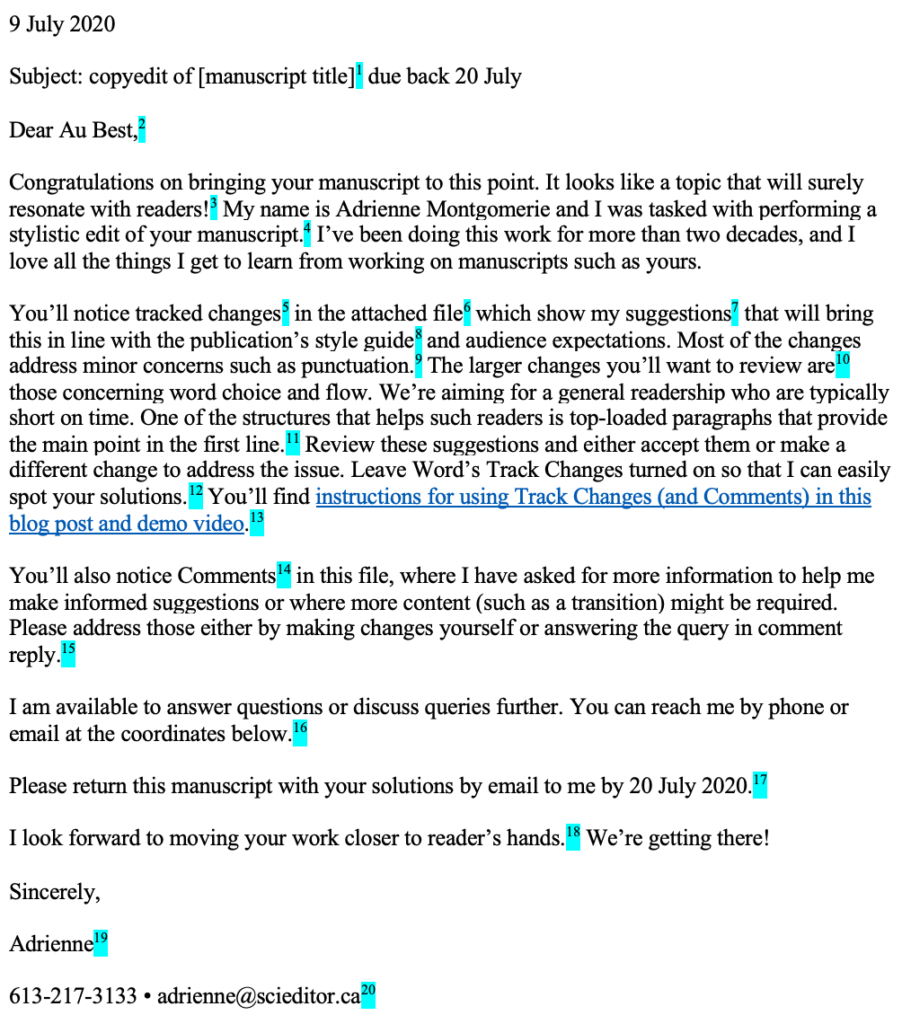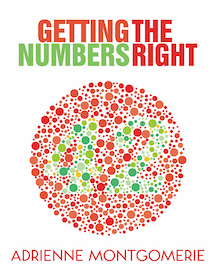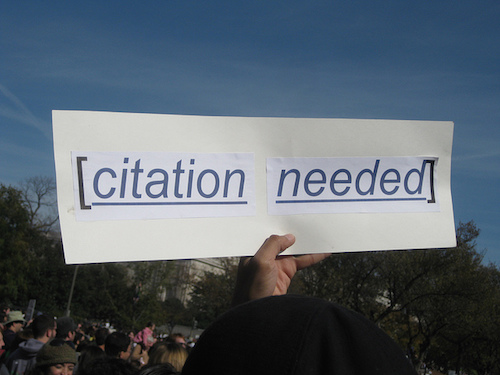The author memo summarizes next steps for the manuscript and gets the writer to do their part. It’s called an author memo because the editor addresses it to the author. When the editor’s memo addresses a managing editor, the production team, or some other cog in the publishing wheel, the message may be given the more generic title of “transmittal” memo and it will contain details pertinent to the recipient, not those discussed here.

The most effective memo is brief, encouraging, and clearly outlines what is to be done and by when. It basically says: “Hi, this is me. This is what I was asked to do. Here’s the kind of changes you’ll find I suggested. And here’s what I want you to do.”
Read the made-up example below. It’s annotated to explain the purpose of each part. In the last section below, you’ll find those annotations in the form of a sort of checklist you can use when writing your own memo.
Sample Author Memo

A Note on Tone
Seeing the sea of markup in an edited manuscript can be terrifying. Do what you can to assure the writer that this is typical and does not indicate that they are an utter hack who should give up writing. And, while formality might be advised early on in establishing a relationship, there may yet be call for the “friendly exclamation mark.” Use your judgement, and follow their lead if you are comfortable getting more familiar.
Pre- or Follow-up Phone Call

Your voice can carry so much more warmth and encouragement than a memo can. Consider calling ahead if there are complex issues or massive changes requested in order to reassure the writer and prevent paralysis. Especially if this is the first time they have ever been edited. I assure them that my own writing gets marked up quite a bit by editors too.
You might consider a follow-up call a couple days before deadline — to get them on track, remind them of how long their review will take, or clear up any confusing points.
Checklist for Author Memos
These annotations to the sample memo can be used as a checklist for writing your own author memo. (The numbers match points in the sample above.)
- Help them out and keep your memo from getting lost in a sea of messages, name the file or title; for best results, include a deadline here too.
- Address them by their full name to avoid misgendering. TIP: Double-check the spelling!
- Praise! Give it in any form you can; the more specific, the better. Praise the font if that’s all you’ve got.
- Introduce yourself and why they are hearing from you.
- Mention that there are tracked changes to be reviewed.
- Look! There’s an attachment! Says so right here.
- Maybe the changes aren’t optional, but required to match the publication’s style. Maybe rejecting the editor’s “suggestions” will result in the editor “suggesting” that they publish elsewhere. But, on many points, there is some room for negotiation. Calling your edits “suggestions” is one small act of deference to nudge the writer towards not hating everything you’ve done before they even look at it.
- “It’s not me, it’s them! What you had was fine, just colouring this for our shelf.”
- Alay panic over the sea of markup they might face upon opening the file. It can be scary! Reassure them that these are minor changes to address the style sheet… and that they themselves remain valuable and skilled humans, regardless.
- Briefly summarize the category of changes you want them to address. You might give a brief example, or elaborate on a point that needs more room than a comment balloon allows, but don’t reiterate everything here.
- Terrific if you can concisely justify the bigger changes here. Resist over-explaining, lest it sound condescending.
- Explain what action the author should take and what tools to use for it. Or, you might want to lock Track Changes on, yourself!
- Lend a hand. Word is our bread and butter, but these features may be unknown to them! That link is to What to Do With An Edited Word File and you’re welcome to direct anyone to it.
- Draw attention to the queries and where to find them (in Comment balloons).
- Call to action, again.
- Note how short this memo can be? Keep it to under 2 pages. A manuscript evaluation, by contrast, should be many more pages long.
- Give a timeline. Be sure to allow enough time for them to do the work, given their other duties, holidays, etc. At a bare minimum, give them at least enough time for a medium proofreading pace of only the changes and queries (2500 wph). For novice writers, it might be helpful to give them a heads-up that this will take X hours, not just 10 minutes.
- Close with more praise! (And yes, that would be better as the plural: readers’.)
- Sign it.
- Don’t make them hunt for contact info. Make it prominent.
21… remember the attachment!





